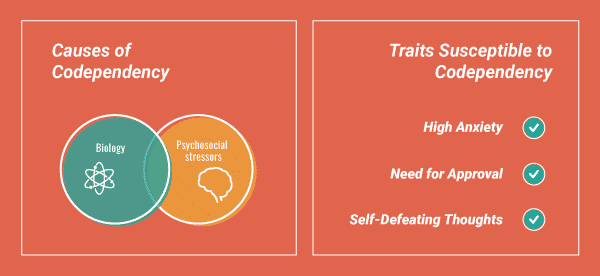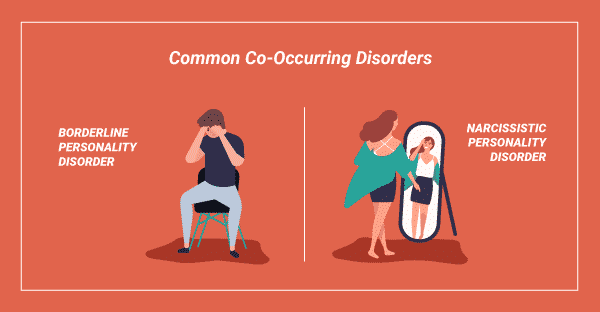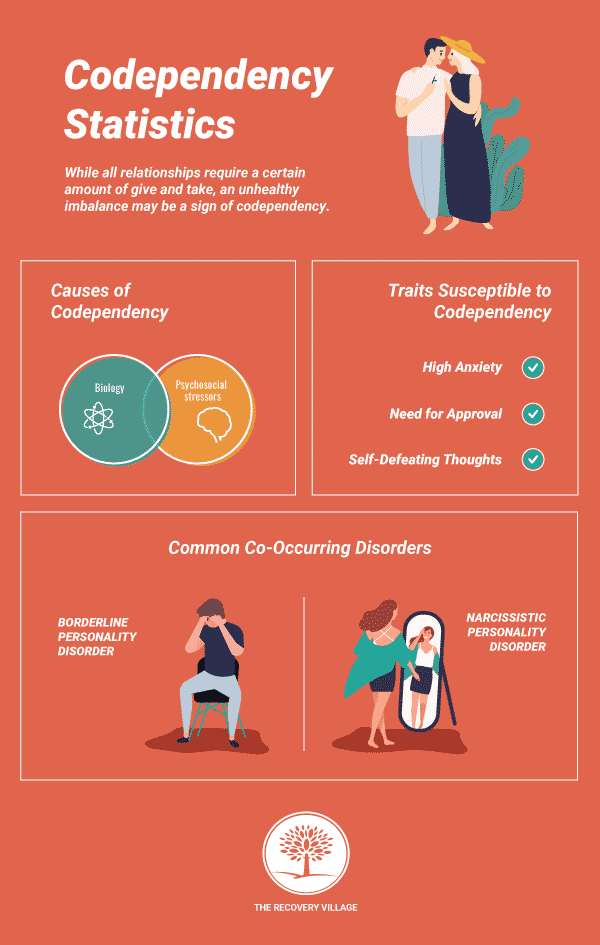What does a codependent relationship look like? Learn the characteristics of codependency, statistics about its prevalence and strategies to re-establish balance in these relationships.
While all relationships require a certain amount of give and take, an unhealthy imbalance may be a sign ofcodependency. Codependency is characterized by an unhealthy or obsessive dependence on another person, or a willingness to sacrifice one’s own wants and needs to please another in order to feel loved or validated. Codependent relationships can exist in a range of circumstances but are common among families where stress or dysfunction — such as substance abuse disorders or trauma — are present.
People with codependency may demonstrate low self-esteem, obsessiveness, people-pleasing behaviors and difficulty setting boundaries. Understanding the prevalence of codependency can be an important step toward establishing healthy relationships and setting boundaries.
Prevalence of Codependency
Although the exact prevalence of codependency in the population is difficult to capture, it is estimated that rates are higher among certain populations. Specifically, codependency may bemore commonamong those who have experienced early life trauma, are in a closerelationship with someone with a substance use disorderor have certainpersonality traitsthat make them susceptible to codependency, such as scoring high on anxiety, need for approval or self-defeating thoughts.

Codependency in Men vs. Women
While codependency in women may be assumed to be more common than codependency in men, this assumption stems more fromtraditional gender stereotypesthan significant biological differences. Gender differences in codependency may also be related todifferent ratesof substance use among men and women.Some researchsuggests that codependency is more related to personality than gender.
Codependency in Adults
The experience of codependency can be cyclical, as it is often passed between generations.Causes of codependencyin adults are often linked to having grown up in challenging or stressful family circumstances, such as environments with addiction or mental illness. Symptoms of codependencyin adults can include low self-esteem, people-pleasing, trouble managing emotions and communicating, and obsessive thinking. Codependent adults may have a hard time living independently and maintaining healthy romantic and familial relationships.
Codependency in Children
Children with a codependent parent often learn codependent behaviors from that parent. Children with a codependent parent or substance use in the home may feel as though their self-worth is tied to pleasing their parent, or may feel insecure or anxious about the parent-child relationship, which perpetuates the cycle of codependency. A stressful environment in early life, childhood trauma and unstable parenting are some of thestrongest predictorsof codependency.
Codependency and Co-Occurring Disorders
Codependency shares traits and symptoms with other mental disorders, includingdepression,post-traumatic stress disorder (PTSD)andobsessive-compulsive disorder (OCD). For example, codependency and depression are closely related, as they share common features such as low self-esteem and self-worth. Obsessive thoughts are something that codependency may have in common with OCD. Although codependency itself is not a personality disorder, it can often co-occur withborderline personality disorderornarcissistic personality disorder. Importantly, professional support can help to differentiate and manage these disorders.

Codependency and Substance Abuse
The term “codependency” was initially used to describe someone close to or caring for a person with a substance use disorder or alcoholism. Although codependency now includes a broader range of relationships, thosecaring for someone with a substance use disorderoften feel shame, have low self-esteem, take excessive responsibility, be overly involved, and minimize their own wants and needs.Substance abuse can promote codependency, dysfunction and imbalance in relationships, and make it difficult for loved ones to have fulfilling and healthy connections with one another.
Codependency Treatment and Prognosis
The imbalance that codependency can bring to relationships and an individual’s well-being can be harmful to all those involved. Seekingtreatment for codependencyoften involves:
- Learning how to set boundaries
- Seeking fulfillment as an individual, rather than being dependent on others
- Creating distance from codependent relationships
- Seeking support from others close to you, not just codependent individual
Codependent habits and beliefs can be deeply ingrained and often take time, patience and support to overcome. Seeking help from a professional, as well as those close to you, can be beneficial in restoring healthy boundaries, self-worth and quality of life.
If you or someone you love is affected bycodependency and substance abuse, The Recovery Village can help.Contact us todayto discuss possible treatment plans.

















